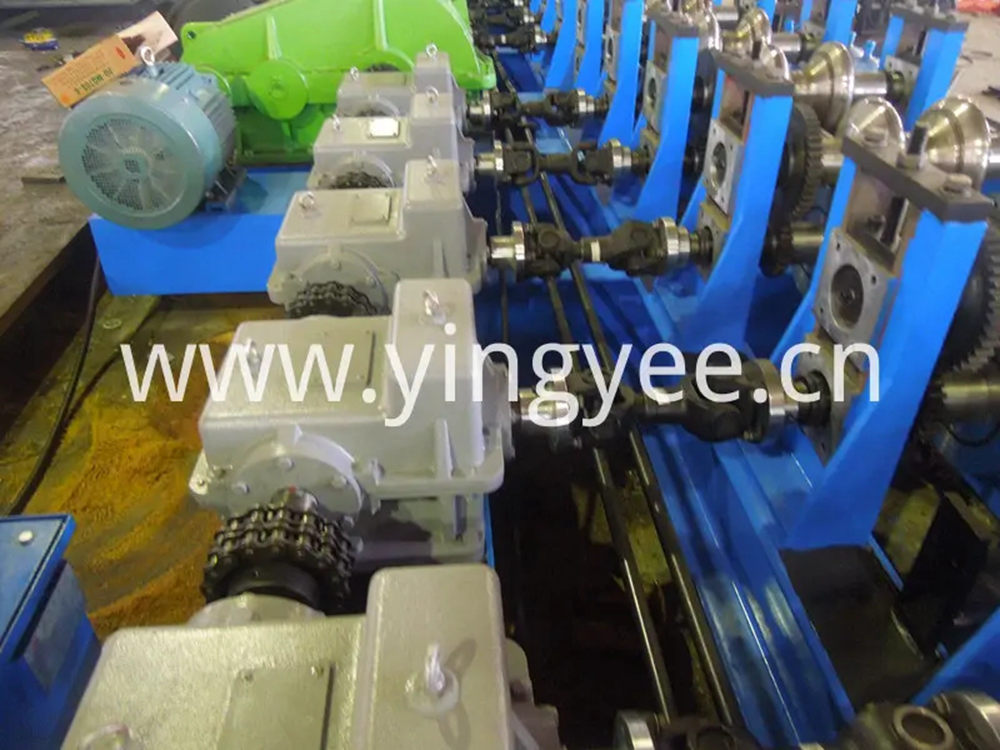
Angle Iron Roll Forming Machine Revolutionizing Steel Fabrication
The construction and manufacturing industries are continually evolving, with new technologies making production processes more efficient and cost-effective. One such innovation that stands out is the Angle Iron Roll Forming Machine. This sophisticated machinery has transformed how angle iron, a vital component in various structural applications, is produced.
Understanding Angle Iron
Angle iron, also known as angle steel, is a metal section with a distinctive L shape, available in various sizes and thicknesses. It is favored for its high strength-to-weight ratio, making it an excellent choice for support structures in buildings, bridges, and other constructions. Additionally, angle iron is used in manufacturing components such as frames, brackets, and reinforcements.
The Role of Roll Forming Machines
Roll forming is a continuous bending operation in which a long strip of metal is gradually shaped into a desired cross-section. This technique is instrumental in creating profiles, such as angle iron, efficiently and consistently. The Angle Iron Roll Forming Machine is specifically designed for this task, enabling manufacturers to produce high-quality angle iron in large quantities.
Key Components of Angle Iron Roll Forming Machines
An Angle Iron Roll Forming Machine comprises several critical components designed to ensure smooth operation and precise output. These components include
1. Material Feed System This system ensures that the metal strips are fed into the machine at the correct speed and alignment. Proper feed is crucial for maintaining uniformity in the final product.
2. Rollers The heart of the machine, the rollers are specially shaped to gradually bend the metal strip into the angular shape. Each roller in the series adjusts the profile incrementally.
3. Cutting Mechanism Once the desired angle iron length is achieved, the cutting mechanism, often a hydraulic or mechanical cutter, processes the strip into individual pieces. This ensures precision and minimizes waste.

4. Control System Advanced Angle Iron Roll Forming Machines are equipped with digital control systems, enabling operators to set parameters and monitor the production process for optimal efficiency and quality.
Advantages of Using Angle Iron Roll Forming Machines
The benefits of employing an Angle Iron Roll Forming Machine are manifold
- High Efficiency The continuous nature of roll forming allows for high-speed production, significantly reducing manufacturing time compared to traditional methods.
- Consistency The machine's settings and automation ensure that each piece of angle iron produced is uniform in dimensions, which is crucial for structural integrity.
- Material Optimization Roll forming is known for its material efficiency, as it generates minimal scrap during the production process. This leads to lower raw material costs.
- Flexibility Modern machines can easily adjust to produce different sizes and thicknesses of angle iron, making them versatile assets for manufacturers dealing with diverse projects.
- Labor Savings Automation reduces the need for skilled labor, allowing companies to allocate human resources to other critical areas of production.
Conclusion
In summary, the Angle Iron Roll Forming Machine is an indispensable tool in contemporary metal fabrication. Its ability to produce high-quality angle iron efficiently makes it a favorite among manufacturers in the construction and industrial sectors. As technology advances, these machines are expected to become even more sophisticated, further enhancing production capabilities and establishing new benchmarks in the industry. For businesses looking to optimize their operations, investing in an Angle Iron Roll Forming Machine is a strategic move toward efficiency and quality.